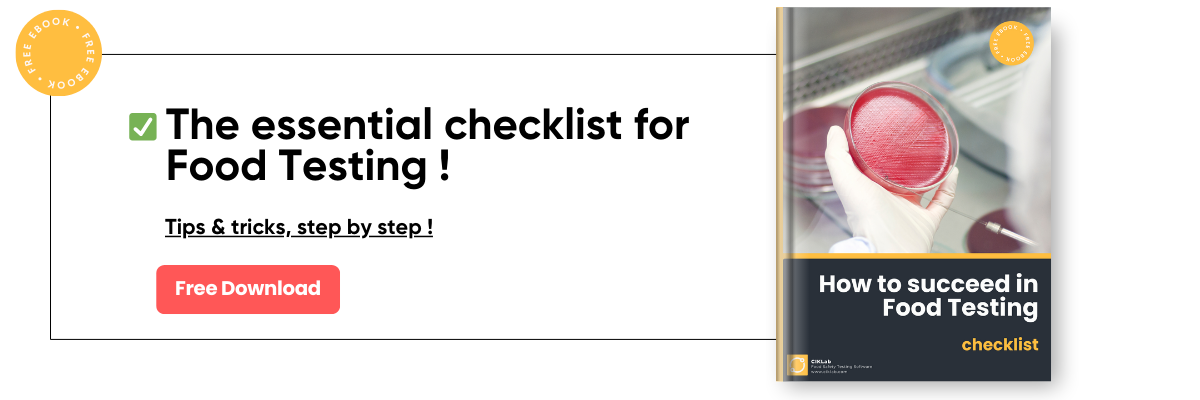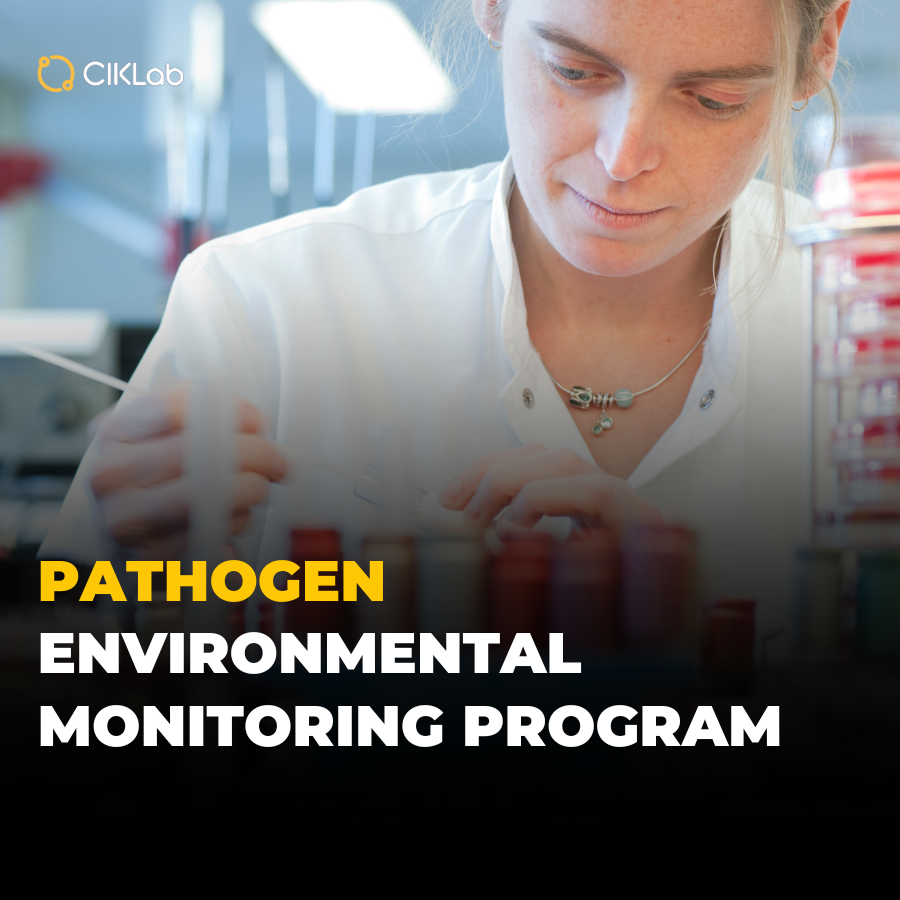Controlling chemical contaminants is crucial for food safety, but understanding how to do so can be challenging. The question is which chemical substances should be considered for conducting one's own risk assessments ?

Sommaire :
1) What are the chemical contaminants in food ?
2) Natural origin chemical contaminants
3) What are environmental chemical contaminants ?
4) Food Process Contaminants: Neo-Formed Compounds (NFCs)
5) How to easily manage your monitoring & Quality Control plans ?
Introduction
In the food industry, detecting and controlling chemical contaminants is crucial. Contamination can occur at various stages of the food chain. Advancements in analytical techniques have significantly improved our ability to detect and identify a wide range of contaminants.
Regulations like the EU Regulation 2023/915 and recommendations from the European Food Safety Authority (EFSA), along with evolving toxicological data, are aligning with these technological advancements.
Navigating these developments and classifying contaminants for risk assessment is a key challenge.

What are the chemical contaminants in food ?
Chemical contaminants in food are undesirable substances that may be present in food products. They can have harmful or toxic effects on human and/or animal health.
These compounds can be either synthetic or natural. Chemical contaminants are of two main origins when unintentional:
natural origin (e.g., toxins in animals, alkaloids in plants, certain trace elements in minerals)
anthropogenic (human-made) origin, resulting from activities like industrial pollution, agricultural waste, vehicle emissions, and other environmental pollution sources.
These contaminants can be found at varying concentrations in food, and their presence can be attributed to numerous factors such as air, water, or soil pollution, the use of agricultural chemicals, inappropriate packaging materials, and improper processing and handling practices.
A detailed risk assessment requires an accurate evaluation of raw materials, including their origin, cultivation, processing, storage methods, as raw materials can accumulate multiple contaminants at different stages.
The impact of processing on the final product is also crucial, as it can lead to the formation of new chemical compounds, known as neo-formed substances.
1. Natural origin chemical contaminants
Even though they are of natural origin, these compounds can be extremely toxic to humans or animals. Nature produces its own "chemicals," such as natural toxins, which often act as defense mechanisms in plants, algae, fungi, or bacteria.
Unlike other contaminants introduced into the food chain by human activity, many of these toxins naturally occur in certain types of food.
💡 Some of the most toxic chemical substances known today are of natural origin. Examples include botulinum toxin, ricin, and tetrodotoxin.
What are the different natural chemical contaminants?
Thousands of chemical substances found in nature do not have a human origin. While there are naturally occurring heavy metals in some soils, most natural chemical contaminants are sometimes incorrectly referred to as toxins.
Natural toxins :
| Toxins ** | Origin | Examples |
| Phytotoxins | Plants |
|
| Mycotoxines | Molds |
|
| Phycotoxins (Biotoxines marines) | Algae |
|
| Cyanotoxins | Microalgae / Cyanobacteria |
|
| Fungal toxins | Higher Fungi |
|
| Bactério-toxines | Bacteria |
|
2. What are environmental chemical contaminants ?
Environmental contaminants are chemical substances present in the environment that can contaminate food at various stages.
Their sources are diverse, including industrial activities, pesticide use, waste, atmospheric emissions, and wastewater discharges. These contaminants encompass a wide range of substances, such as pesticides, dioxins & furans, PCBs (polychlorinated biphenyls), PAHs (polycyclic aromatic hydrocarbons), PFAS, etc.
These substances are well-known and pose significant health risks, including being endocrine disruptors, carcinogens, mutagens, and reproductive toxins.
2.1 Heavy metals and Trace Metal Elements (TMEs)
Heavy metals, increasingly referred to as "trace metal elements (TME)" or simply "trace elements," are chemical contaminants commonly found in food. These substances, toxic above a certain threshold, can originate from various sources, including industry, agriculture, the natural environment, and the use of food contact materials.
Heavy metals are particularly concerning due to their potential to accumulate in the tissues of living organisms.
Diet remains the primary route of exposure to heavy metals:
- Lead (Pb)
- Cadmium (Cd)
- Total arsenic & inorganic arsenic (As)
- Mercury (Hg)
- Copper (Cu)
- Chromium (Cr)
- Tin (Sn)
At the European level, "heavy metals" or "trace metal elements" are regulated in specific foodstuffs.
2.2 What are Persistent Organic Pollutants (POPs) ?
The Stockholm Convention provides the following definition:
Persistent Organic Pollutants (POPs) are organic chemical substances possessing a unique combination of physical and chemical properties such that, when released into the environment, they are:
- Persistent: remaining intact for exceptionally long periods (many years),
- Mobile: spreading widely throughout the environment via natural processes involving soil, water, and particularly air,
- Bioaccumulative: accumulating in living organisms, including humans, and reaching high concentrations at higher levels of the food chain,
- Toxic: to wildlife and humans.
Most POPs are halogenated compounds, and the strong chemical bonds that bind carbon atoms to chlorine, bromine, or fluorine atoms make them extremely stable and hazardous
All POPs can contaminate foodstuffs, but not all chemical contaminants in food are POPs !
For example, some pesticides are undesirable beyond certain regulatory thresholds in food products, but this doesn't necessarily classify them as POPs
Due to their nature and prevalence in the environment, POPs alone encompass a significant portion of the most dangerous chemical contaminant families
Dioxins and furans
Also known as PCDD/F: PolyChloroDibenzoDioxins and PolyChloroDibenzoFurans
Dioxins and furans are organochlorines, forming a group of chemical compounds known for their persistence in the environment and health risks. Dioxins and furans are primarily byproducts formed during combustion in the presence of chlorine. These compounds are characterized by their highly chlorinated structures, which contribute to their stability and longevity in the environment.
- The main source of exposure is through food consumption,
- The products susceptible to contamination include high-fat foods such as dairy products, fish, eggs, and meat.
- The origin: atmospheric emissions from incineration plants.
PCDD/Fs are regulated in certain products.
PFAS: Perfluoroalkyl and polyfluoroalkyl substances
Per- and polyfluoroalkyl substances (PFAS) are a family of synthetic chemical compounds that include perfluorooctanoic acid (PFOA), perfluorooctane sulfonate (PFOS), and other similar compounds.
These substances (> 4000 molecules) are characterized by extremely strong carbon-fluorine bonds, making them resistant to degradation and persistent in the environment.
PFAS are often referred to as "forever chemicals" for this reason.
- The main source of exposure is through food consumption,
- The products susceptible to contamination include water, high-fat foods such as dairy products, fish, eggs, and meat.
- The origin: Environmental pollution, water, food packaging
PAHs: Polycyclic Aromatic Hydrocarbons
Polycyclic Aromatic Hydrocarbons (PAHs) are a class of around a hundred organic compounds composed of multiple fused phenolic cycles. They are primarily formed by the incomplete combustion of organic matter, including fossil fuels. PAHs are known for their persistence in the environment and their toxicity.
The most dangerous and well-known PAH is Benzo(a)pyrene, although there are significant numbers of PAHs including naphthalene. European regulations impose control over four PAHs: Benzo(a)pyrene, Benzo(a)anthracene, Benzo(b)Fluoranthene, and Chrysene. Many laboratories offer screenings that go beyond these four main PAHs.
- The main source of exposure, particularly for non-smokers, is through food consumption,
- The products susceptible to contamination include high-fat foods.
- The origin: food cooking processes (incomplete combustion), especially at home.
Organochlorine Pesticides (OCPs)
Also known as OCP (Organochlorine Pesticides), these organochlorines are a group of synthetic chemical compounds used as pesticides. Widely employed towards the end of the war, they were gradually phased out during the 1980s and 1990s. They are characterized by their chlorinated structure, and their highly lipophilic nature gives them long persistence in the environment and a strong ability to accumulate in the food chain.
Although banned, they can still be found in many imported products in Europe.
Examples include:
- Dichlorodiphenyltrichloroethane (DDT), its isomers, and metabolites (op’-DDT, pp’-DDT, op’-DDE, pp’DDE, DDD).
- Lindane, hexachlorocyclohexane (HCH), and its isomers (α-HCH, β-HCH, γ-HCH, δ-HCH, ε-HCH).
- Hexachlorobenzene (HCB).
- Heptachlor.
- Chlordane.
- Aldrin.
- Dicofol.
- Dieldrin.
- Endrin.
- Mirex.
- Endosulfan.
- Toxaphene.
PCBs: Polychlorinated Biphenyls
Polychlorinated Biphenyls (PCBs) are chlorinated chemical compounds, once commonly used in electrical equipment for their dielectric and thermal properties. They are chemically very similar to PCDD/Fs and are often analyzed alongside dioxins and furans. There are 209 congeners.
- The main source of exposure is through food consumption,
- The products susceptible to contamination include high-fat foods, especially fish.
- The origin: Soils, atmospheric emissions.
Brominated Flame Retardants (BFRs), PBDEs
Brominated Flame Retardants (BFRs), including Polybrominated Diphenyl Ethers (PBDEs), are a class of brominated chemical compounds used as flame retardants in various products, including plastics, textiles, and electronic devices.
Their lipophilic nature makes them highly concerning as they easily enter the food chain and have adverse effects on human health, particularly as endocrine disruptors and carcinogens.
Brominated Flame Retardants (BFRs) include:
- Hexabromocyclododecane (HBCDD)
- Polybrominated Biphenyls (PBB)
- Tetrabromobisphenol A (TBBPA)
PBDEs (Polybrominated Diphenyl Ethers) include:
- Hexabromodiphenyl ether and heptabromodiphenyl ether (hexaBDE and heptaBDE)
- Tetrabromodiphenyl ether and pentabromodiphenyl ether (tetraBDE and pentaBDE)
3. Food Process Contaminants: Neo-Formed Compounds (NFCs)
What are Neo-Formed Chemical Contaminants (NFCs) in Foods?
A process contaminant is a substance that is not intentionally added to foods but forms during food production or processing processes.
These substances are also referred to as "neo-formed" (NFC). All of these compounds can arise from chemical reactions between ingredients themselves under certain conditions or result from thermal degradation and/or alteration of certain food components (including some additives such as nitrites). These contaminants are toxic and impact the food's sanitary quality.
The formation of neo-formed compounds is complex and depends on the type of matrix: water activity (Aw), pH, sugar content, proteins, amino acids, and the process: cooking method, temperature, time, pressure, etc.
It is the Matrix-Process combination that determines the appearance of the compounds to be monitored.
A first step could be to list the compounds to be searched for based on the process-related risk:
| Process ** | "Neo-formed" (NFC). |
| Thermal Processes |
|
| Fermentation Processes |
|
| Preservation Processes or Additives |
|
| Acid or Alkaline Treatment Processes |
|
| Hydrogenation Oil Refining |
|
Acrylamide: Formed in starchy foods during high-temperature cooking (frying, grilling, roasting). It appears during the Maillard reaction, which involves sugars and amino acids like asparagine. Foods that may be affected include potatoes (fries, chips), cereals, roasted coffees, etc. Acrylamide content is regulated at the European level in certain foodstuffs.
Biogenic Amines: Biogenic amines are nitrogenous compounds formed by enzymatic action on free amino acids during certain fermentation processes. Among the most well-known biogenic amines are histamine, tyramine, putrescine, and cadaverine.
Polycyclic Aromatic Hydrocarbons (PAHs): PAHs are chemical compounds primarily formed during high-temperature cooking processes such as smoking or barbecuing. They are generated either by incomplete combustion of fuels (charcoal, smoke) or by pyrolysis of organic materials. These substances are found in various foods such as grilled meats, smoked fish, and certain cereal products. There are about a hundred identified compounds, but the most toxic and regulated ones are: Benzo(a)pyrene, Benzo(a)anthracene, Benzo(b)Fluoranthene, and Chrysene.
Nitrosamines (N-nitrosamines and N-nitrosamides): Nitrosamines are genotoxic chemical compounds, most likely carcinogenic. They are mainly formed by the chemical reaction between nitrites, used as food preservatives, and amines naturally present in foods. Although processed meats, meat, and salting products are the main vectors, nitrosamines can also appear in alcoholic beverages, dairy products, and beer.
Heterocyclic Aromatic Amines (HAAs): These compounds are formed during the cooking of animal proteins (red meat, fish, poultry) mainly from the amino acids: tryptophan and glutamic acid. There are two main families of HAAs: thermal HAAs and pyrolytic HAAs. Thermal HAAs form under standard cooking conditions, while pyrolytic HAAs form at much higher temperatures (> 250°C). Many of these compounds are possibly and probably carcinogenic: MeIQ, MeIQx, IQx, 4,8-DiMeIQx, PhIP, AαC, MeAαC, Trp-P-1, Trp-P-2, and Glu-P-1.
3-MCPD, 2-MCPD, and Glycidol Esters (GE): 3-monochloropropane 1,2-diol and its derivatives, 3-MCPD esters, are formed during the hydrolysis of vegetable proteins. They are found in various processed foods, particularly in certain oils and vegetable fats such as palm oil, for example, during refining stages. 3-MCPD and its esters are regulated at the European level: CE 2029/915.
Hydroxymethylfurfural (HMF) or 5-(hydroxymethyl)furfural: This is a sugar degradation compound occurring under certain conditions. It can be found in products that have undergone thermal treatments, particularly sought after in honey, whose low levels ensure quality. It can also be found in fruit juices and jams.
4-Methylimidazole (4-MEI): This is a byproduct that can form during food cooking (e.g., coffee roasting), but it is mainly known as a byproduct of caramel colorants.
Ethyl Carbamate: Ethyl carbamate, commonly found in fermented foods like bread and yogurt, as well as in alcoholic beverages, results from natural fermentation. Particularly concentrated in stone fruit distillates, its formation involves substances such as hydrogen cyanide, urea, citrulline. This compound is considered potentially carcinogenic by the International Agency for Research on Cancer.
4. Chemical Contaminants from Food Contact Materials (FCMs)
Food Contact Materials (FCMs) can be a source of chemical contamination in food. These contaminants originate from the materials used to manufacture food packaging, kitchen utensils, surface coatings, and other products in direct or indirect contact with food.
The goal is to ensure that these materials in direct or indirect contact with food are sufficiently inert to prevent the release of components through phenomena such as migration.
The regulations governing materials suitable for food contact are extremely strict, complex, and often require the intervention of specialists to work on several fronts: Materials, Regulatory, and Analytical.
The tests to be performed depend on the type of packaging, packaging, or materials that come into direct or indirect contact with the food, for example: paper, cardboard, plastics, alloys, surface coatings. Therefore, the list of substances to be searched for goes hand in hand with the type of material and its composition. Thus, manufacturer declarations are crucial.
Even if risks can be controlled internally, it is not uncommon for issues to concern received food raw materials.
The list is too exhaustive, but nonetheless, a few compounds can be found (or at least searched for!) in certain food products.
Bisphenols: Bisphenols (especially Bisphenol A - BPA) are used in plastic materials like polycarbonate or certain coating resins, such as tanks or cans. It is an endocrine disruptor.
Phthalates, Plasticizers: Phthalates are plasticizers used in many plastic materials. They are found in various products such as varnishes, adhesives, toys, and electrical appliances. Food remains the primary source of exposure to phthalates. Phthalates are endocrine disruptors. Examples include dimethyl phthalate (DMP), diethyl phthalate (DEP), diisopropyl phthalate (DiPP), dipropyl phthalate (DPP), diisobutyl phthalate (DIBP), dibutyl phthalate (DBP), dipentyl phthalate (DnPP), dihexyl phthalate (DHP), benzyl butyl phthalate (BBP), dicyclohexyl phthalate (DCHP), bis-(2-ethylhexyl) phthalate (DEHP), di-n-octyl phthalate (DNOP), di-isononyl phthalate (DINP), di-isodecyl phthalate (DIDP).
MOSH/MOAH: MOSH - MOAH are mineral oil hydrocarbons obtained by refining petroleum. These compounds enter the food chain in several ways, in this case through packaging migration (e.g., inks) but not exclusively. Oils, cereals, and chocolate seem to be the most exposed products. There are two categories of MOH: MOSH (Mineral Oil Saturated Hydrocarbons) and MOAH (Mineral Oil Aromatic Hydrocarbon).
NIAS: Non-Intentionally Added Substances, are substances that are not intentionally added to materials or products but may be present as contaminants or derivatives in the production process of food contact materials. According to European Regulation EC 10/2011 concerning plastics materials and objects intended to come into contact with food, NIAS must be evaluated as part of the overall safety of materials.
Nanomaterials: Organic, inorganic, or composite materials produced by humans for applicative purposes and composed wholly or partly of constituent particles with at least one dimension between 1 and 100 nm (nano-scale). Some included in FCMs are Silver, Zinc Oxide, Titanium Nitride, Carbon Black, and Silicon Dioxide.
Primary Aromatic Amines (PAA) Alkylphenols: Nonylphenols Additives and Solvents Extractable Metals & Metalloids Formaldehyde Photoinitiators (Benzophenone, ITX, etc.) PFAS: PFOS (Perfluorooctane Sulfonate), PFHxS, and PFOA (Perfluorooctanoic Acid) Etc.

4. How to easily manage your monitoring & Quality Control plans ?
In a critical sector like the food industry, establishing an effective and easy-to-manage surveillance plan is a requirement to ensure the safety of products and comply with regulations.
Here are some key steps to optimize this process.
Step 1: Identify hazards, risks, and prioritize.
The first step is to identify relevant chemical contaminants for your products and processes. This depends on several factors, including the type of product, manufacturing process, source of raw materials, and previous risk assessment results.
Prioritize contaminants based on their toxicity, likelihood of occurrence, and regulatory requirements, of course!
Step 2: Carefully select the analyses and specialized laboratories.
Establish partnerships with specialized laboratories to conduct regular surveillance analyses. These laboratories have extensive technical, scientific, and regulatory expertise. Some laboratories can also assist you with risks associated with various processes.
Qualify suppliers, Qualify raw materials, Qualify recipes based on defined processes.
Step 3: Plan surveillance with consistent self-checks
Once the hazards and risks are assessed based on all previous factors, establish a periodic surveillance schedule according to these parameters. Automate it if you manage numerous suppliers providing various materials and if you have vastly different manufacturing processes!
Étape 5 : Révision et Amélioration Continue
A surveillance plan is never static. Regularly review and update your plan based on scientific monitoring, regulatory changes, feedback, and analysis results!
This ensures that your surveillance remains relevant and effective.
Sources:
** ⚠️ These lists of chemical contaminants in food are not exhaustive and do not replace thorough scientific and regulatory monitoring. Their purpose is purely informative and aims to provide an overview to better understand this complex topic. The information provided is subject to regular updates based on scientific advances and regulatory changes. It is recommended to consult specialized sources for up-to-date and detailed information
💡 These articles might also interest you:
👉 >> Which analyses are absolutely essential in food industry ?
👉 >> Quality Control plans for the food industry, what solutions to be efficient?
©2024 CIKLab.com All rights reserved.









